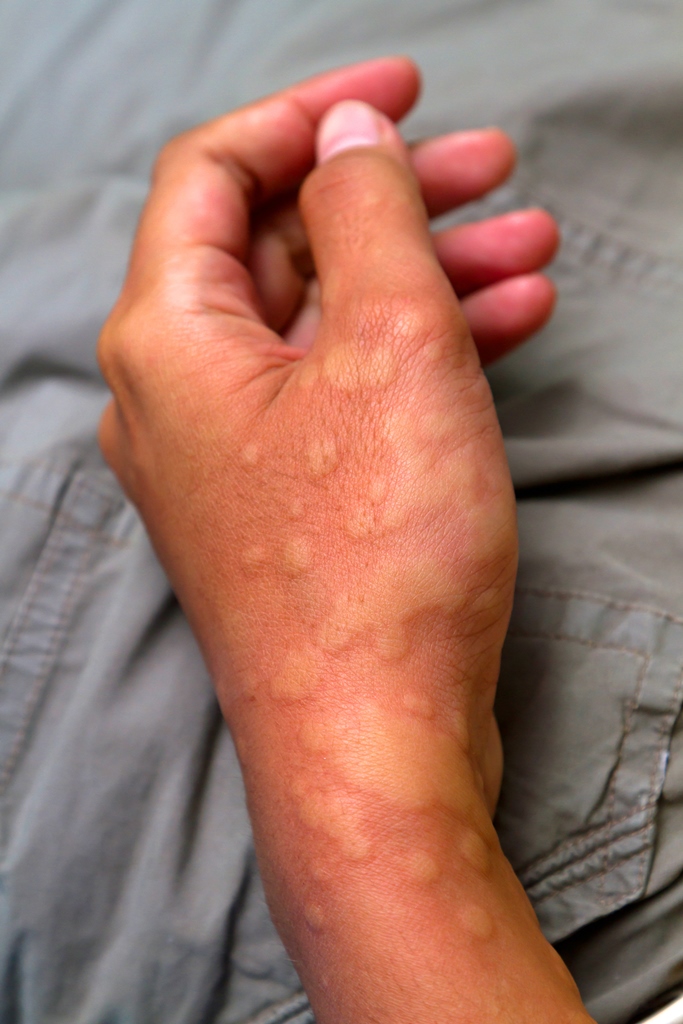 Hives, also known as urticaria, are itchy patches of skin that turn into swollen, red bumps.
Hives, also known as urticaria, are itchy patches of skin that turn into swollen, red bumps.
Acute hives are common and affect up to 20% of adults. Common causes of acute hives include foods, medications, viral infections, insect stings or bites, pet dander, pollen, poison ivy, and poison oak.
Chronic hives occur almost daily for more than six weeks and are typically itchy. Each hive lasts less than 24 hours. They do not bruise nor leave a scar. Often, the cause of chronic hives is not clear. A majority of cases with chronic hives are unknown in origin. There are a subset of these patients that will have an antibody that activates their allergy cells that release histamine. Other less common causes of hives include underlying autoimmunity or inflammation and physical stimuli. Examples include rubbing or scratching (simple dermographism), pressure or constriction, exposure to cold air and ice, sweating, exercise, anxiety, and sun exposure.
Although the most common cure for chronic hives is time, a Board Certified Allergist can perform a detailed history and evaluation to rule out specific causes. Often, a combination of short and long acting antihistamines can help relieve symptoms with minimal side effects.
Xolair, an anti-IgE antibody, was approved for chronic hives in the spring of 2014. Dr. Simpson has taken severe, chronic hive patients who have been suffering for years off all their antihistamines once controlled on Xolair. Xolair decreases the activation of allergy cells which leads to decreased histamine levels and improved symptoms.


